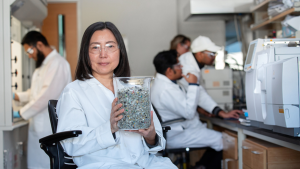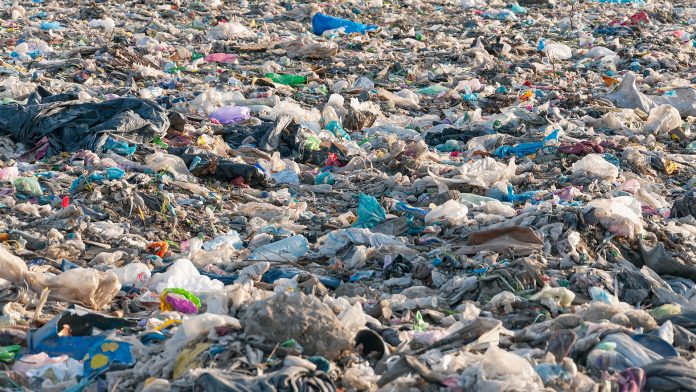Researchers are integrating tested technologies and developing new ones to break down plastic waste for conversion into useful materials.
Researchers are developing new technologies, such as plasma that shoots ‘bullet’ electrons, to break down plastic waste to convert it into useful materials.
“We’re learning about new technologies and helping to develop new ideas for more interdisciplinary approaches to solving these complex problems,” said Xianglan Bai, an Iowa State University associate professor of mechanical engineering.
Bai, and her teams of researchers, are working on two $2m-plus research projects supported by the U.S. Department of Energy. The projects aim to convert plastic waste that is hard to recycle into reusable materials for a variety of industries.
Converting low-quality plastic into materials for the construction industry
The newest project is a three-year $2.25m grant, administered by the Department of Energy’s Bioenergy Technologies Office, that aims to convert the lowest-quality plastics in the waste stream into materials for construction industries.
To convert the plastics that are rejected for recycling, the researchers first feed the mixed wastes into an anaerobic digester where bacteria break it down to produce biogas, a sustainable, low-cost, low-carbon fuel.
The leftovers from the digester would then be combined with the nonbiodegradable waste and heated without oxygen – a process called pyrolysis. From this, bio-oils are produced, which can be used for asphalt-binding products and charcoal-like biochars for carbon-sequestering concrete additives and reinforced biocomposites.
Challenges to converting rejected plastic waste
However, rejected plastic waste is “very complex – there are too many things in there. It’s very heterogenous,” said Bai.

Because of this, the waste must be analysed to understand what is there. The researchers then must identify technologies that can efficiently and economically convert the plastic waste, and analyse the resulting materials.
As this requires a lot of expertise, Bai assembled a large team for the project, that will develop a system that uses most of those rejected wastes and keeps them out of landfills.
Using electron ‘bullets to break down plastics
The second project, a three-year $2.5m grant administered by the Department of Energy’s Advanced Manufacturing and Bioenergy Technologies offices, will develop new plasma technology to convert single-use plastics to biodegradable plastics.
The project will test a hybrid of plasma and biological technologies to break down and upcycle single-use plastic films such as plastic bags, product packaging, and food containers.
Bai and the team have been developing innovative, low-temperature plasma conversion technologies for adding value to biomass and plastic waste. The plasma is created by applying a strong electric field to a gas – accelerating electrons and creating charged particles.
“The free electrons are like bullets,” Bai said. “They speed up and hit other things. These ‘attacks’ can break down chemical bonds.”
The researchers can break down decontaminated plastic films to create a fermentable liquid by using plasma with carbon dioxide. This liquid can be fermented to produce biodegradable polymers, with the fermentation creating carbon dioxide that can be looped into the plasma reactor.
This results in the conversion of plastic waste film into biodegradable plastics in a process that lowers energy use, carbon emissions, and production costs.
Bai has assembled another team of researchers to develop this idea for reusing plastic waste.
“These two projects are using very different approaches,” Bai said. “Both are using an interdisciplinary approach to solve the problems and understand what is happening at the molecular level.”









